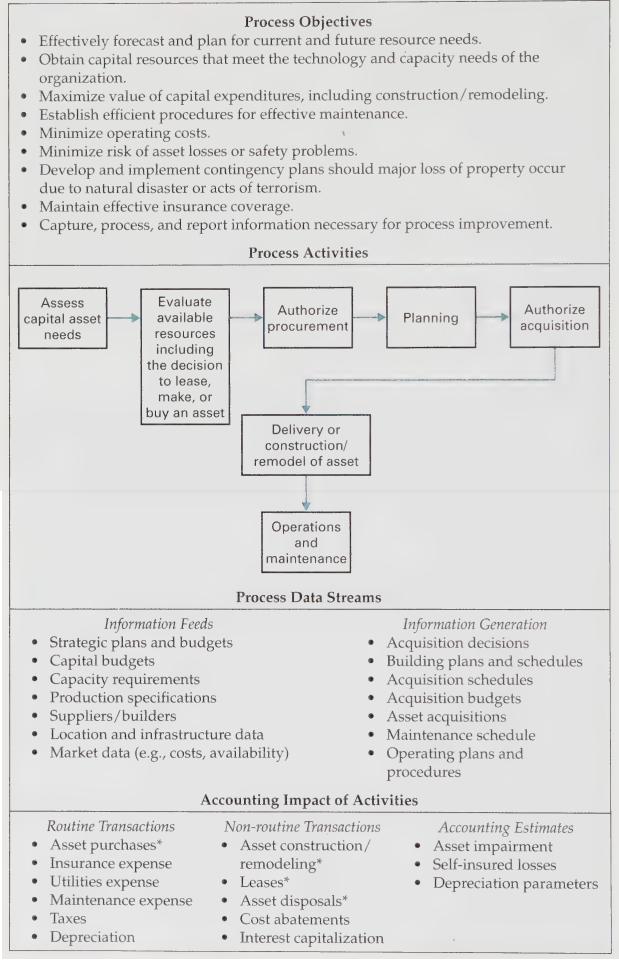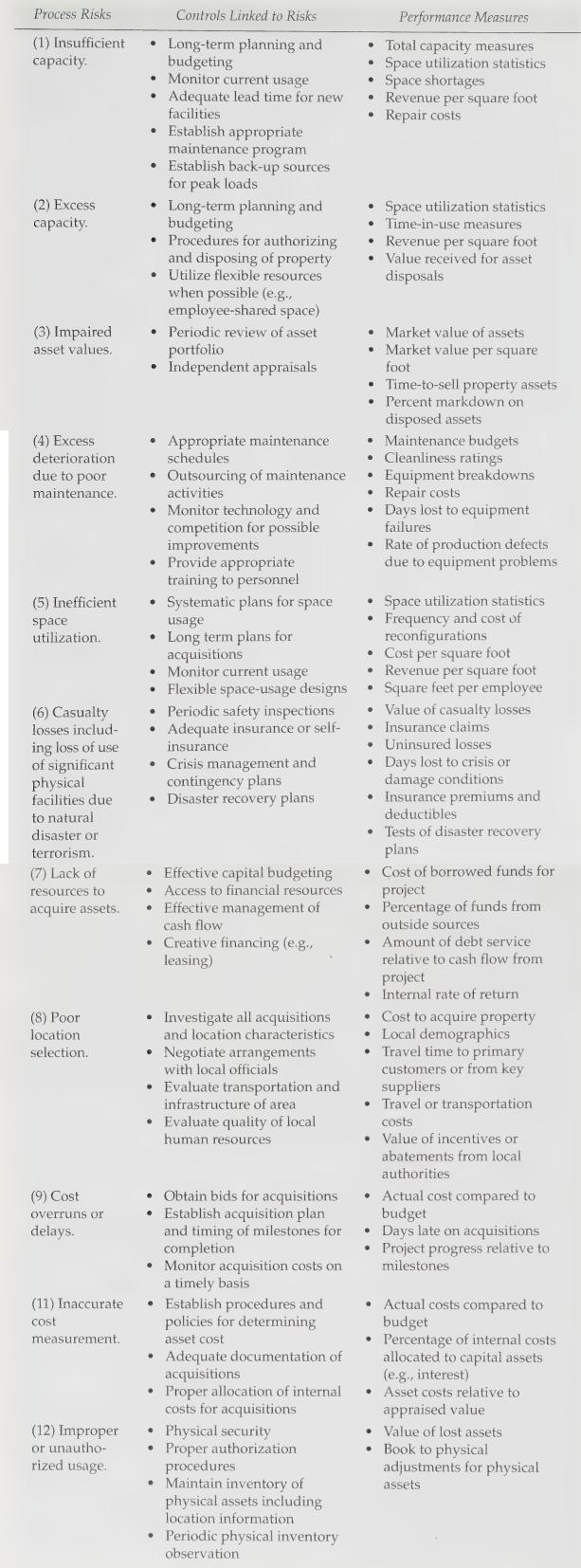Question:
Site selection and property development is an important property management subprocess for many organizations. Consider The Home Depot, which opened at least 100 stores per year for more than 15 years consecutively, making it the fastest growing retailer in U.S. history. Its growth rate is evidenced by construction-in-progress and store opening experses - two accounts that are significant enough to appear as line items on the company's financial statements. Access The Home Depot's web site and research the company's growth rate over its relatively young history. Use this information and Figures 13-2 and 13-3 to create an internal threat analysis for The Home Depot's site selection and property development process.
Figure 13-2

Figure 13-3

Transcribed Image Text:
Process Objectives Effectively forecast and plan for current and future resource needs. Obtain capital resources that meet the technology and capacity needs of the organization. Maximize value of capital expenditures, including construction/remodeling. Establish efficient procedures for effective maintenance. Minimize operating costs. Minimize risk of asset losses or safety problems. Develop and implement contingency plans should major loss of property occur due to natural disaster or acts of terrorism. Maintain effective insurance coverage. Capture, process, and report information necessary for process improvement. Process Activities Assess capital asset needs Evaluate available resources Authorize procurement Planning Authorize acquisition including the decision to lease, make, or buy an asset Delivery or construction/ remodel of asset Operations and maintenance Process Data Streams Information Feeds Strategic plans and budgets Capital budgets Capacity requirements Production specifications Suppliers/builders Location and infrastructure data Market data (e.g., costs, availability) Routine Transactions Asset purchases* Insurance expense Utilities expense Maintenance expense Taxes Depreciation Information Generation Acquisition decisions Building plans and schedules Acquisition schedules Acquisition budgets Asset acquisitions Maintenance schedule Operating plans and procedures Accounting Impact of Activities Non-routine Transactions Asset construction/ remodeling* Leases* Asset disposals* Cost abatements Interest capitalization Accounting Estimates Asset impairment Self-insured losses Depreciation parameters








